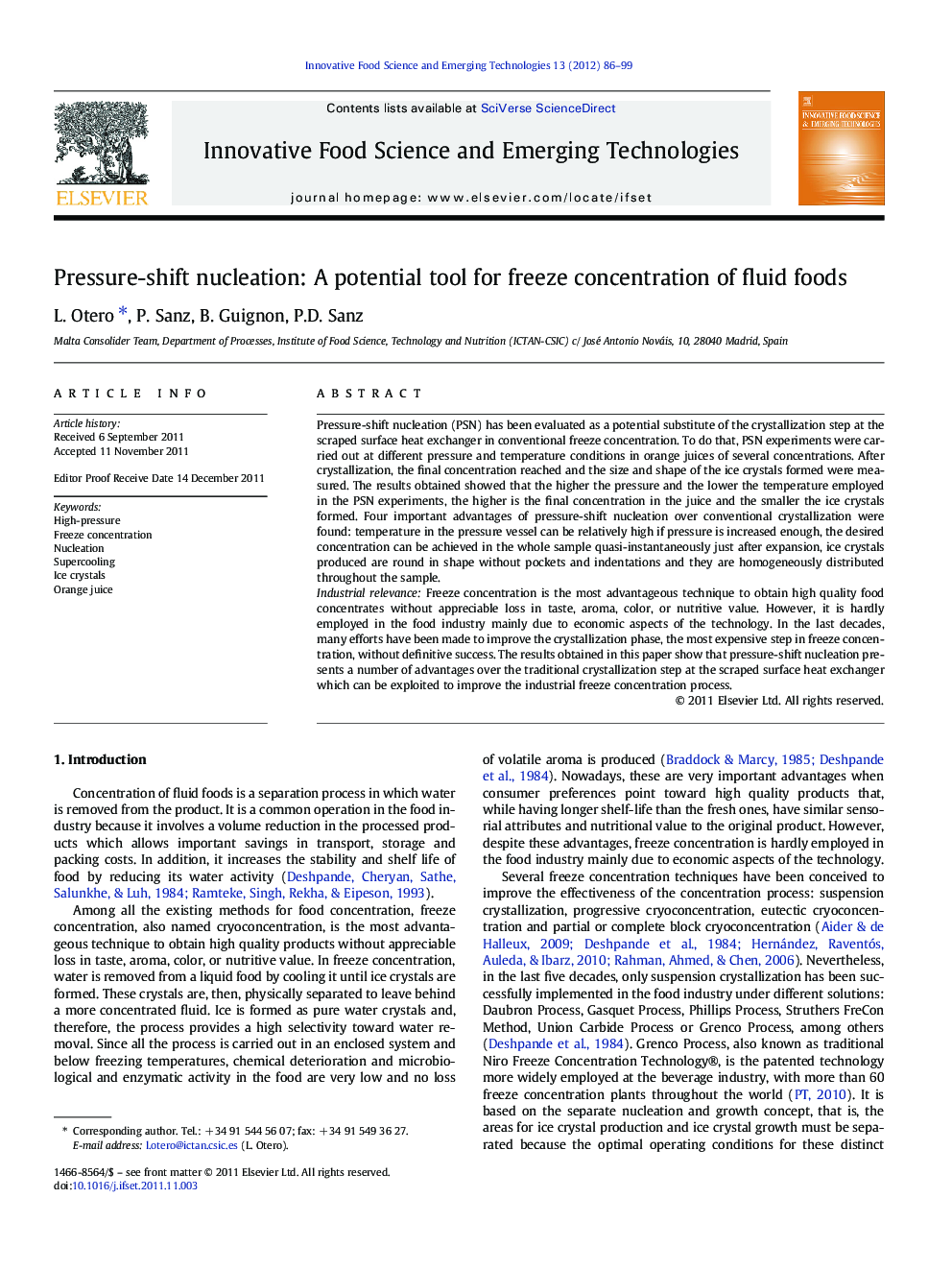| Article ID | Journal | Published Year | Pages | File Type |
|---|---|---|---|---|
| 2087275 | Innovative Food Science & Emerging Technologies | 2012 | 14 Pages |
Pressure-shift nucleation (PSN) has been evaluated as a potential substitute of the crystallization step at the scraped surface heat exchanger in conventional freeze concentration. To do that, PSN experiments were carried out at different pressure and temperature conditions in orange juices of several concentrations. After crystallization, the final concentration reached and the size and shape of the ice crystals formed were measured. The results obtained showed that the higher the pressure and the lower the temperature employed in the PSN experiments, the higher is the final concentration in the juice and the smaller the ice crystals formed. Four important advantages of pressure-shift nucleation over conventional crystallization were found: temperature in the pressure vessel can be relatively high if pressure is increased enough, the desired concentration can be achieved in the whole sample quasi-instantaneously just after expansion, ice crystals produced are round in shape without pockets and indentations and they are homogeneously distributed throughout the sample.Industrial relevanceFreeze concentration is the most advantageous technique to obtain high quality food concentrates without appreciable loss in taste, aroma, color, or nutritive value. However, it is hardly employed in the food industry mainly due to economic aspects of the technology. In the last decades, many efforts have been made to improve the crystallization phase, the most expensive step in freeze concentration, without definitive success. The results obtained in this paper show that pressure-shift nucleation presents a number of advantages over the traditional crystallization step at the scraped surface heat exchanger which can be exploited to improve the industrial freeze concentration process.
► Pressure-shift nucleation can be applied to freeze concentration. ► Pressure and temperature affect the final concentration achieved in the sample. ► Desired concentration can be achieved in the whole sample just after expansion. ► A model to predict the final concentration after pressure-shift nucleation is developed. ► Implementation of pressure-shift nucleation in a freeze concentration process.
